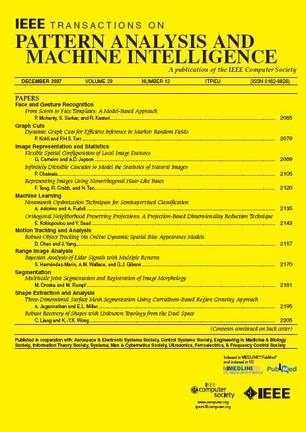从事件相机学习高效的网格流和光流。
IF 18.6
1区 计算机科学
Q1 COMPUTER SCIENCE, ARTIFICIAL INTELLIGENCE
IEEE Transactions on Pattern Analysis and Machine Intelligence
Pub Date : 2025-09-26
DOI:10.1109/tpami.2025.3615144
引用次数: 0
摘要
在本文中,我们探讨了基于事件的网格流估计问题,这是一项涉及从事件相机预测空间平滑稀疏运动场的新任务。首先,我们回顾了基于事件的流估计的最新进展,强调了两个需要进一步研究的关键领域:i)缺乏特定于网格流的事件数据集和方法,以及ii)事件数据密度的未充分探索的挑战。首先,我们生成了一个大规模的高分辨率事件网格流(HREM)数据集,该数据集通过在1280×720上包含高分辨率的优点,处理动态对象和复杂的运动模式,并提供光流和网格流标签来展示其优势。这些方面在以往的作品中都没有得到充分的探讨。此外,我们提出了高效的基于事件的网格流(EEMFlow)网络,这是一种轻量级模型,具有特制的编码器-解码器架构,可以快速准确地估计网格流。此外,我们升级了EEMFlow网络以支持密集事件光流,其中提出了一个置信度诱导细节补全(CDC)模块来保留尖锐的运动边界。我们进行了全面的实验,以证明我们的EEMFlow模型与最近最先进的流方法相比具有卓越的性能和运行效率(快30倍)。作为扩展,我们将HREM扩展为HREM+,这是一个多密度事件数据集,有助于深入研究现有方法在不同密度数据上的鲁棒性,并提出了一个自适应密度模块(Adaptive Density Module, ADM)来调整输入事件数据的密度到更优的范围,提高模型的泛化能力。我们通过实证证明,ADM有助于EEMFlow和EEMFlow+的性能分别显著提高8%和10%。本文章由计算机程序翻译,如有差异,请以英文原文为准。
Learning Efficient Meshflow and Optical Flow from Event Cameras.
In this paper, we explore the problem of event-based meshflow estimation, a novel task that involves predicting a spatially smooth sparse motion field from event cameras. To start, we review the state-of-the-art in event-based flow estimation, highlighting two key areas for further research: i) the lack of meshflow-specific event datasets and methods, and ii) the underexplored challenge of event data density. First, we generate a large-scale High-Resolution Event Meshflow (HREM) dataset, which showcases its superiority by encompassing the merits of high resolution at 1280×720, handling dynamic objects and complex motion patterns, and offering both optical flow and meshflow labels. These aspects have not been fully explored in previous works. Besides, we propose Efficient Event-based MeshFlow (EEMFlow) network, a lightweight model featuring a specially crafted encoder-decoder architecture to facilitate swift and accurate meshflow estimation. Furthermore, we upgrade EEMFlow network to support dense event optical flow, in which a Confidence-induced Detail Completion (CDC) module is proposed to preserve sharp motion boundaries. We conduct comprehensive experiments to show the exceptional performance and runtime efficiency (30× faster) of our EEMFlow model compared to the recent state-of-the-art flow method. As an extension, we expand HREM into HREM+, a multi-density event dataset contributing to a thorough study of the robustness of existing methods across data with varying densities, and propose an Adaptive Density Module (ADM) to adjust the density of input event data to a more optimal range, enhancing the model's generalization ability. We empirically demonstrate that ADM helps to significantly improve the performance of EEMFlow and EEMFlow+ by 8% and 10%, respectively.
求助全文
通过发布文献求助,成功后即可免费获取论文全文。
去求助
来源期刊
CiteScore
28.40
自引率
3.00%
发文量
885
审稿时长
8.5 months
期刊介绍:
The IEEE Transactions on Pattern Analysis and Machine Intelligence publishes articles on all traditional areas of computer vision and image understanding, all traditional areas of pattern analysis and recognition, and selected areas of machine intelligence, with a particular emphasis on machine learning for pattern analysis. Areas such as techniques for visual search, document and handwriting analysis, medical image analysis, video and image sequence analysis, content-based retrieval of image and video, face and gesture recognition and relevant specialized hardware and/or software architectures are also covered.

 求助内容:
求助内容: 应助结果提醒方式:
应助结果提醒方式:


